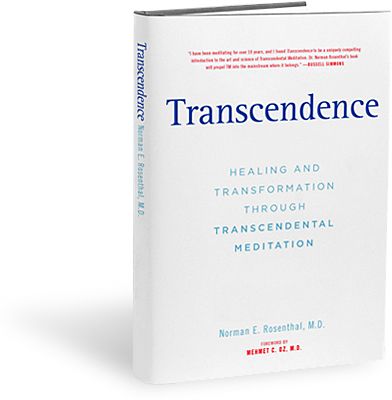
Meditations on First Philosophy was Descartes's first philosophy. It was first written in Latin but later was translated into French. Descartes proved God's existence and immortality in the treatise. The first publication of the work in Latin was in 1641. It wasn't until 1647, however, that it was available in English. Descartes' ideas are not very popular today, despite their popularity.
Rene Descartes in France wrote the first meditation. After studying the ideas of Aristotle, he was unable or unwilling to accept them. He was determined to find a better way of explaining his ideas. His efforts turned out to be futile. Meditations on First Philosophy was the result. This book is fascinating because it clearly explains Descartes’ ideas. It also offers a wealth in information about the mind's nature and functions.

The Fifth Meditation on Matter's Nature deals with God. As in the previous parts of his work, the Meditator relies on his previous conclusions to prove the existence of God. He also differentiates between clear objects with a nature of confusion. He continues to cogitate on the definition of a mathematical object. He then asks his self if existence can be defined as perfection. It doesn't hurt, but the answer is no.
Rene Descartes wrote the third Meditation on First Philosophy. It is one the most popular books about the subject. This volume was written in French and narrated by a female narrator. Mihali's introduction challenges Descartes’ traditional interpretation. She argues that Descartes’ arguments are not circular. They instead suggest that the essence of matter can be simply extended by the mind. And that it can also be an extension of that essence.
Descartes' first Meditation about First Philosophy is the first in his series. It is the second of the three books on First Philosophy. It includes the following sections: Selections From Objections and Replies; The Nature of Man; and Meditation on First Philosophy. This is a very popular text for philosophy students. This book is a valuable resource for researchers and academics. You will also find many citations of original works.

The first Meditation on First Philosophy reflects on the relationship between the universe and the world. The second Meditation on First Philosophy is a meditation in which you are examining the meaning of words and the reality of the world. The meditation's first half focuses upon the idea of an "independent being" and the second part on the concept a "dual being". It combines the two perspectives, and is an effective tool for understanding how to define reality.
FAQ
Do I need calories to count?
You might be asking "What is the best diet?" or "is counting calories necessary?" It depends on many factors such as your current health, personal goals, preferences, and overall lifestyle.
The Best Diet For Me - Which One Is Right For You?
My current health, my personal goals and lifestyle will determine the best diet for me. There are many options, both good and bad. Some diets work well for some people and others do not. So what should I do? How can I make the right choice?
These are the main questions addressed by this article. It begins with an overview of the different diets today. Then we will discuss the pros & cons of each kind of diet. Then, we will discuss which diet is the best.
To begin, let's take a quick look at the different types of diets.
Diet Types
There are three main types: low-fat, high-protein, or ketogenic. Let's briefly discuss them below.
Low Fat Diets
A low-fat diet reduces the amount of fats you eat. This is accomplished by decreasing the intake of saturated fats such as butter and cream cheese. and replacing them with unsaturated fats (olive oil, avocados, etc.). A low fat diet is often recommended for those who want to lose weight quickly and easily. This type of diet can lead to constipation and heartburn as well as indigestion. Vitamin deficiencies can also occur if the person doesn't get enough vitamins through their diet.
High Protein Diets
High protein diets discourage carbohydrates and encourage the use of proteins. These diets usually have higher amounts of protein than other diets. These diets can help increase muscle mass and decrease calories. However, they might not provide enough nutrition for those who need to eat frequently. They may also be too restrictive and not suitable for everyone.
Ketogenic Diets
Ketogenic diets also go by the name keto diets. They are high in fat and moderate in protein and carbs. These foods are popular among athletes and bodybuilders as they allow them to train harder, longer and without becoming tired. To avoid side effects such as fatigue, nausea, headaches, or other unpleasant side effects, you must strictly adhere to their instructions.
How much should I weight for my height and age? BMI calculator & chart
Use a BMI calculator to determine how much weight is needed to lose. A healthy BMI range is between 18.5 and 24.9. If you want to lose weight, then you should aim to drop about 10 pounds per month. Enter your height in the BMI calculator.
This BMI chart shows you if it is possible to identify if you are either overweight or obese.
How to measure body fat?
The best way to measure body fat is with a Body Fat Analyzer. These devices are used for measuring the percentage of body fat in people who want to lose weight.
Here are 7 ways to live a healthy lifestyle.
-
Make sure you eat right
-
Exercise regularly
-
Sleep well
-
Drink plenty of water.
-
Get enough rest
-
Be happy
-
Smile often
Increase immunity with herbs or supplements
Herbs and natural remedies can be used to boost immune function. Ginger, garlic, ginger, echinacea and ginkgo biloba are some of the most common.
These herbs should not be considered as a substitute for conventional medical treatment. Side effects include nausea, diarrhea and stomach cramps, headaches and dizziness.
Statistics
- WHO recommends reducing saturated fats to less than 10% of total energy intake; reducing trans-fats to less than 1% of total energy intake; and replacing both saturated fats and trans-fats to unsaturated fats. (who.int)
- nutrients.[17]X Research sourceWhole grains to try include: 100% whole wheat pasta and bread, brown rice, whole grain oats, farro, millet, quinoa, and barley. (wikihow.com)
- This article received 11 testimonials and 86% of readers who voted found it helpful, earning it our reader-approved status. (wikihow.com)
- Extra virgin olive oil may benefit heart health, as people who consume it have a lower risk for dying from heart attacks and strokes according to some evidence (57Trusted Source (healthline.com)
External Links
How To
What does the "vitamins” word mean?
Vitamins are organic compounds found naturally in food. Vitamins help us absorb nutrients from foods we eat. Vitamins cannot be made by the body; they must be taken from food.
There are two types vitamins: water soluble or fat soluble. Water-soluble vitamins dissolve in water easily. Examples include vitamin C,B1 (thiamine), B2 (riboflavin), B3 (niacin), B6 (pyridoxine), folic acid, biotin, pantothenic acid, and choline. Fat-soluble vitamins are stored in the liver, fatty tissue and kidneys. Examples include vitamin D, E, K, A, and beta carotene.
Vitamins can be classified according to biological activity. There are eight main groups of vitamins.
-
A – Essential for normal growth, and the maintenance of good health.
-
C is important for nerve function and energy production.
-
D - essential for healthy bones, teeth, and gums.
-
E - Required for good vision & reproduction
-
K - required for healthy muscles and nerves.
-
P – vital for building strong bones.
-
Q – aids digestion of iron and iron absorption
-
R - necessary for making red blood cells.
The recommended daily allowance (RDA), for vitamins, varies depending upon age, gender, or physical condition. The U.S. Food and Drug Administration (FDA) sets the RDA values.
For adults over 19, the RDA for vitaminA is 400 micrograms per daily. Pregnant mothers need 600 micrograms per days because it is vital for the development and growth of their baby. Children ages 1-8 require 900 micrograms per day. Infants under one year of age require 700 micrograms per day, but this amount decreases to 500 micrograms per day between 9 months and 12 months of age.
Children between the ages of 1-18 need 800 micrograms per daily for obesity, while children overweight require 1000 micrograms. Children underweight or obese will need 1200 mg per day.
2200 mg of vitamin A per day is required for children aged 4-8 who have been diagnosed by anemia.
2000 micrograms are required daily for good health in adults over 50. Due to their increased nutrient needs, pregnant and breastfeeding women need 3000 micrograms daily.
1500 micrograms is the recommended daily intake for adults aged 70+, who lose approximately 10% of muscle each year.
Women who are pregnant or nursing need more than the RDA. Pregnant mothers need 4000 micrograms per daily during pregnancy and 2500 after giving birth. Breastfeeding mothers need 5000 mg per day when breastmilk is being produced.